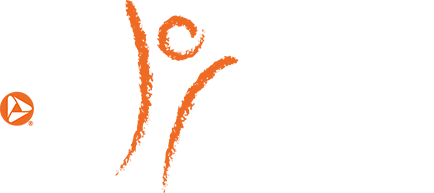While we believe that the books and resources recommended may be of value to you, keep in mind that these are suggestions only and you must do your own due diligence to determine whether the materials are appropriate and suitable for your use. PNC has no sponsorship or endorsement agreement with the authors or publishers of the materials listed.
ALL ABOUT ME

Dancing Shapes
Children will use their bodies to explore nongeometric shapes.

Lesson Objective
Children will learn to use their bodies to explore creating straight, curved, twisted, and angular shapes with their bodies and to move through space.
Art
What You'll Need
- Audio device – for playing music
- Music – any movement music (see Lesson Tips for suggestions)
- Large space – enough for children to move safely without touching each other
What To Do
Note: Prior to starting the lesson, mark the floor with two straight lines of tape. The lines should be long enough for half the class to line up and perform movement without touching the person next to them.
- Discuss with the children the important rules of dance lessons (see Lesson Tips).
- Remind the children of the concept of self-space (see Vocabulary).
- Lead the children in marking their self-space with a shape rhyme: Arms in front/Open wide/This is my self-space inside.
- Introduce the steps of the warm-up:
- Breathing – Take several deep breaths in and out slowly.
- Touch – Using gentle energy, tap/tickle your skin all over the body (arms, shoulders, belly, legs, etc.). Then, using stronger energy, squeeze all over your body to wake up your skin and senses.
- Get Moving – Do several movements that will get the blood flowing. Some examples might be jumping, running in place with high knees, swinging arms or kicking legs, and jumping with legs crossed and then open.
- Tell the children that they will be making shapes using their arms, legs, and bodies within their self-space (see Guiding Student Inquiry).
- Introduce the following shapes, and have the children imitate your movement (see Vocabulary):
- Wall – stand strong with arms straight out to sides.
- Ball – curve head and arms around.
- Pretzel – twist arms and legs in front of you.
- Arrow – hinge one arm and point it and the other arm straight out in the same direction.
- Practice the shapes by calling out a shape and having the children make it several times.
- Once the children are familiar with the shapes, divide the class and line them up on each of the two lines.
- Each teacher (see Lesson Tips) takes turns leading a group of children in the following movements, moving toward the other group and back to their line:
- Make a wall shape, and move it through space with a side slide.
- Make a ball shape, and move it through space with a turn.
- Make a twist shape, and move it through space with a hop.
- Make an arrow shape, and move it through space with a gallop.
- Lead the children through a cool-down; this can include any type of slow, calming movement.
Resources
Home School Resources
Home educators: use these printable lesson PDFs to teach this lesson to your home schoolers. They're available in English and Spanish.
Content Provided By
Common Core State Standards Initiative – These lessons are aligned with the Common Core State Standards ("CCSS"). The CCSS provide a consistent, clear understanding of the concepts and skills children are expected to learn and guide teachers to provide their students with opportunities to gain these important skills and foundational knowledge [1]. Visit the CCSS


